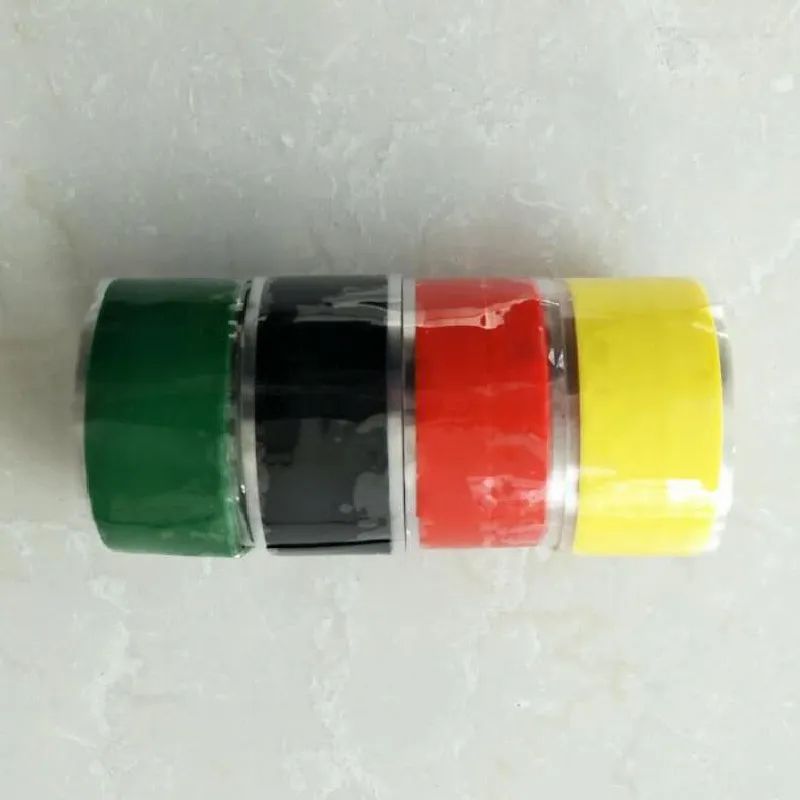Rubber Tape for Electrical Applications A Comprehensive Overview
When it comes to electrical insulation and protection, the significance of rubber tape cannot be overstated. Designed to offer a reliable solution for various electrical applications, rubber tape has become an essential tool for both professionals in the electrical field and DIY enthusiasts. This article explores the fundamental aspects of rubber tape, including its composition, uses, advantages, and best practices for application.
What is Rubber Tape?
Rubber tape, often referred to as insulating rubber tape, is a type of adhesive tape made from a rubber-based material. It is characterized by its excellent insulating properties, flexibility, and ability to conform to different surfaces. Typically, rubber tape is designed to withstand high temperatures and has a high dielectric strength, making it an ideal choice for electrical applications.
Composition and Characteristics
The main component of rubber tape is rubber, which can be either natural or synthetic. The rubber is often compounded with various additives to enhance its characteristics, such as UV resistance, flame retardancy, and water resistance. These properties ensure that the tape remains effective even in challenging environments.
Rubber tape is available in various thicknesses and widths, allowing users to select the appropriate size for specific applications. Moreover, it typically comes in a range of colors, which can be beneficial for coding and organization in electrical installations.
Applications of Rubber Tape
Rubber tape finds a wide array of applications in the electrical industry, including but not limited to
1. Insulation One of the primary uses of rubber tape is for electrical insulation. It effectively prevents electricity from escaping, thereby reducing the risk of short circuits and electrical shocks.
2. Splicing Wires Rubber tape is often used to splice wires together, providing a durable and waterproof seal that protects connections from environmental factors.
3. Repairing Cables In situations where cables are damaged, rubber tape can be employed as a temporary or permanent fix. It can restore the insulation of cut or frayed wires, ensuring continued functionality.
4. Bundling Wires Rubber tape is also used to bundle multiple wires together, creating a neat and organized appearance while preventing tangling.
5. Binding In addition to use in electrical applications, rubber tape can be used to bind items together, providing a secure grip that is both effective and easy to remove.
Advantages of Using Rubber Tape
rubber tape for electrical

Rubber tape offers a multitude of advantages that make it a preferred choice for electrical applications
1. Superior Insulation The primary benefit of rubber tape is its exceptional insulating properties. It prevents electrical current from leaking and helps maintain the integrity of electrical systems.
2. Flexibility and Adhesion Rubber tape is highly flexible, allowing it to conform to various shapes and surfaces. Its strong adhesive ensures that it adheres properly, even under stress.
3. Water and UV Resistance Many rubber tapes are designed to be resistant to water and UV rays, making them suitable for both indoor and outdoor applications. This resistance helps prolong the life of the tape and the installations it protects.
4. Easy to Use Rubber tape can be easily applied without the need for specialized tools. This ease of use makes it accessible for both professionals and novices alike.
Best Practices for Application
To achieve the best results, follow these best practices when using rubber tape
1. Surface Preparation Ensure that the surface is clean and dry before applying rubber tape. Dirt, grease, or moisture can compromise adhesion.
2. Stretch for Best Performance When wrapping, stretch the tape slightly so that it adheres better and conforms to the irregularities of the surface.
3. Overlap the Layers When applying multiple layers, overlap them by about half to ensure complete coverage and enhanced insulation.
4. Use Appropriate Thickness Select the appropriate thickness of rubber tape for your specific application to ensure maximum effectiveness.
5. Store Properly To extend its shelf life, store rubber tape in a cool, dry place away from direct sunlight.
Conclusion
Rubber tape for electrical applications is an invaluable tool that combines flexibility, insulation properties, and ease of use. Its wide range of applications in the electrical industry, coupled with its durability and resistance to environmental factors, makes it an essential item for anyone working with electrical systems. By understanding its benefits and following proper application practices, users can ensure the safety and longevity of their electrical installations.
-
XIANGFAN Rubber Tape-Ultimate Solutions for All Your Insulation NeedsNewsJun.24,2025
-
XIANGFAN Rubber Tape-Protection for Industrial and Residential ApplicationsNewsJun.24,2025
-
XIANGFAN Rubber Tape: Superior Safety and Sealing for Demanding EnvironmentsNewsJun.24,2025
-
XIANGFAN Rubber Tape: Reliable Solutions for Every Electrical ChallengeNewsJun.24,2025
-
XIANGFAN Electrical & Industrial Tape: Powering Reliability Across IndustriesNewsJun.24,2025
-
XIANGFAN Electrical & Industrial Tape: Excellence in Every ApplicationNewsJun.24,2025
